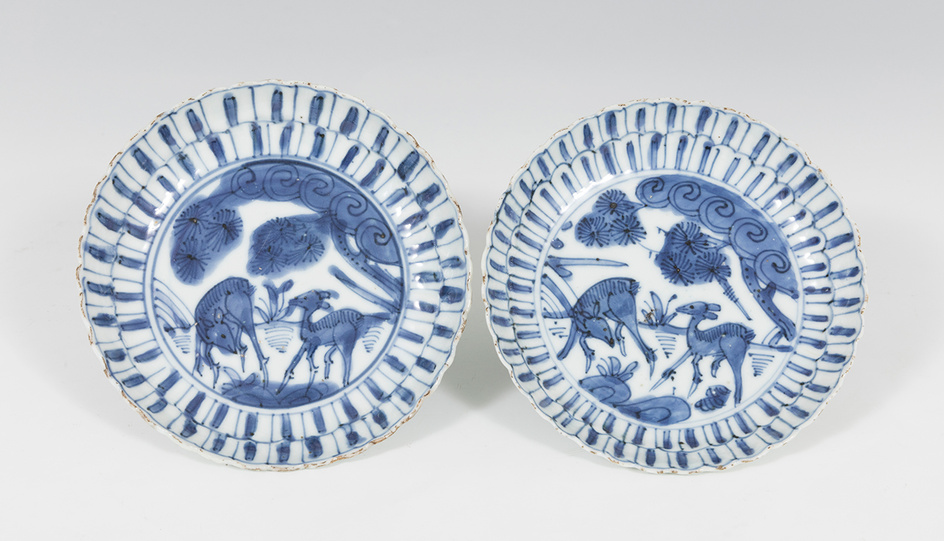Pair of Ko-Sometsuke dishes; China for export from Japan, Ming, transitional period, 1621 -1627.
Pair of Ko-Sometsuke dishes; China for export to Japan, Ming, transitional period, 1621 -1627.
Glazed and enameled porcelain.
Measurements: 2 x 13 x 13 cm (x2).
Blue and white porcelain dishes from the late Ming dynasty, Tianqi or Chongzhen period (1620-1635). This small transitional porcelain saucer-shaped dish would have been used for food for the Japanese tea ceremony, kaiseki. Small plates for serving food in the tea ceremony are the most common form of Chinese export porcelain for Japan. Made in China for the Japanese, they depict two young deer strolling through a landscape The term used for Ming blue and white porcelain for the Japanese tea ceremony is Ko-Sometsuke, meaning ancient blue and white.
COMMENTS
This lot can be seen at the Setdart Madrid Gallery located at C/Velázquez, 7.
View it on
Estimate
Time, Location
Auction House
Pair of Ko-Sometsuke dishes; China for export to Japan, Ming, transitional period, 1621 -1627.
Glazed and enameled porcelain.
Measurements: 2 x 13 x 13 cm (x2).
Blue and white porcelain dishes from the late Ming dynasty, Tianqi or Chongzhen period (1620-1635). This small transitional porcelain saucer-shaped dish would have been used for food for the Japanese tea ceremony, kaiseki. Small plates for serving food in the tea ceremony are the most common form of Chinese export porcelain for Japan. Made in China for the Japanese, they depict two young deer strolling through a landscape The term used for Ming blue and white porcelain for the Japanese tea ceremony is Ko-Sometsuke, meaning ancient blue and white.
COMMENTS
This lot can be seen at the Setdart Madrid Gallery located at C/Velázquez, 7.



